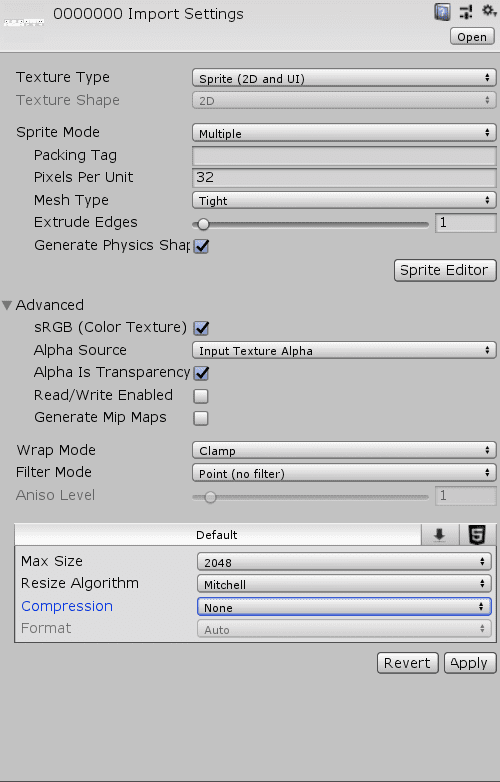

- Texturepacker create sprite sheet pro#
- Texturepacker create sprite sheet software#
- Texturepacker create sprite sheet code#
So for our bird, the code would be: ('bird', 'images/bird.png', 'images/bird.json') Īnd then we would define the animation as normal. The format for loading a JSON supported sprite sheet is a follows ('key', 'path_to_sprite_sheet, 'path_to_data_file') Place these files in your image folder of your project. Two files are generated, an image file that is the sprite sheet and a JSON file that contains the frame data. If your data settings don’t say Phaser, then click the file format button and a selection list will appear in the middle. Note: It may be that things are still kept in order in the file, but not in the image. Your game may differ so feel free to choose the optimization that works best for your game, but this is what works well for me. If I am making a tile-based game with letters, I want the frame 0 to be an A and frame 1 to be a B, and so forth. If I am making a card game, for example, I want frame 0 to be an ace and frame 1 to be a 2. Why do I do this? Remember that I end filename with a number? Doing it this way will keep those in order. There are several different layout settings but I almost always set the algorithm to basic and sort by to Name. So I decided to resize all images to 25% of the original and they all fit fine onto one sheet. When I looked at the size I could see that the image was much too big for my game.
Texturepacker create sprite sheet software#
When I dragged the bird images into the software it showed me that 8 frames would not fit inside one single sheet. this pack in one line using TexturePacker and create a png file as. TexturePacker is a sprite sheet packer which is directly supported by PixiJS. Next, open up TexturePackerGUI and drag your images into the empty pane on the right. TexturePacker is a utility for Sprite sheets, normally for use in the cocos2d game engine. This helps when you need to refer to the frame number later in the code. I’m going to take you through how I do it 99% of the time.įirst I select my images, and always make sure they are numbered or have a number on the end.

TexturePackerGUI is a powerful program with many options, so there are a lot of ways to set up your sprite sheet. I suggest starting with the free version and check it out for yourself. I won’t go into all the details between the two. For my own stuff, I probably could have gotten by with the free version, the artists I work with insist on having the paid features.
Texturepacker create sprite sheet pro#
While I have the pro version, I mostly bought it because the artists in my office have the pro version and I needed to open their files. There may be sometimes I will still do this, but more than likely I will use a brilliant piece of software called TexturePackerGUIThey have both free and paid versions. I would evenly space out individual images, resizing and repositioning until it was just right. For a long time, I’ve been making sprite sheets by opening up my trusty old now discontinued Adobe fireworks (never could get the hang of photoshop).


 0 kommentar(er)
0 kommentar(er)
